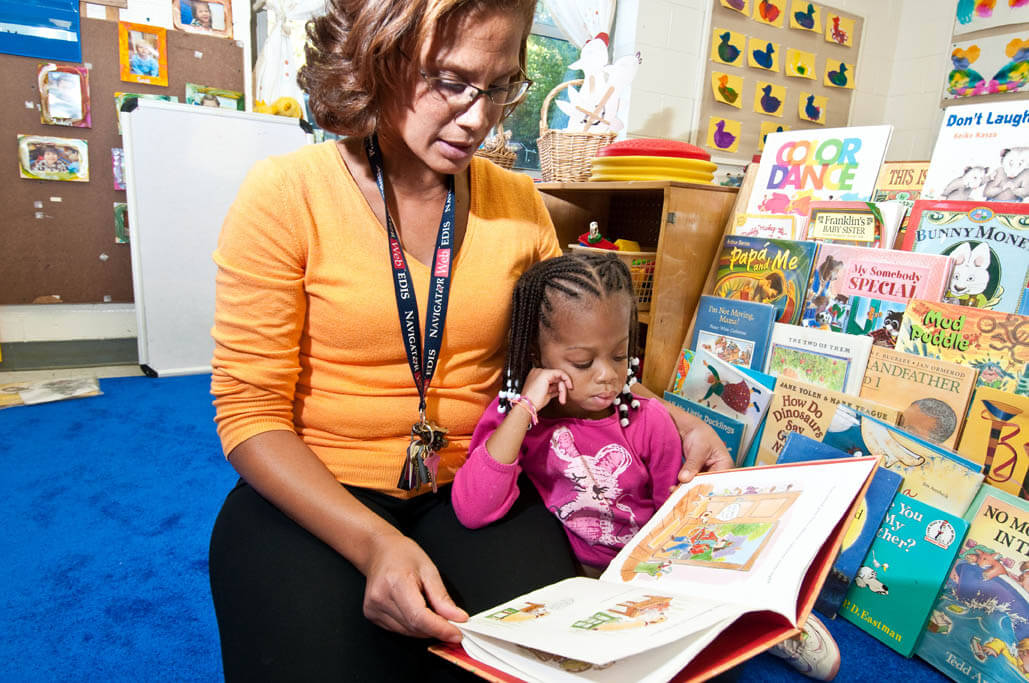Nurturing a Love for Reading
Nurturing a love for reading and writing is a role that parents can play in their children's lives. Success in school and later careers depends on having good reading and writing skills. These days we constantly hear about the importance of literacy. What does literacy mean? It's the ability to read and write.
Help your child learn to love reading. The key is to start early. Read out loud to your child regularly. Research shows that reading together just 30 minutes a day significantly increases your child's reading ability. Help your child see that books can be lifelong friends.
Another important activity for promoting literacy is using the library. Get a library card for each child and go often to select new books. Check with the librarian to find what is appropriate. Take the time to look at your daily activities and help your child see the connection to reading and writing. Cooking, reading food labels, playing word games, and writing stories can be helpful too.
For children who don't read much, it might take time to get used to reading aloud, and later, silent reading. Give it the time it deserves. You may get tired of reading the same stories again and again but it is that repetition that is so important for your child.
Children see adults around them writing and reading messages, notes, articles or books. This often makes them want to say their ideas out loud so you can write them down. At preschool age or older, children begin to write, using their own invented spelling or best guess. They understand that writing helps them share important information and experiences. It is less important for children to spell the words right than it is to enjoy the experience. Correct spelling can happen a little later.
Beyond The Early Childhood Years
Once a child is able to read and write independently, it's common for many adults to leave children alone. Yet, shared literacy activities can continue all our lives. Reading is a wonderful social activity; an opportunity to share and recommend reading materials, and have discussions to expand interests, knowledge and opinions. Continue to read aloud with your child through the elementary school age years.
Some communities have created Authorfests or Reading Days where authors and illustrators offer workshops to children, parents and other guests. Activities can include read-alouds, skits from scenes, discussions, storytelling, decorations, dress-up as authors and more.
Pen pals and book clubs are other ways for the older child to enjoy reading. You can create a book club at your local library or school where children can get together to discuss a book that has been previously selected and read for the club meeting. These clubs give children another view into the world of books and an opportunity to share opinions with friends.
Activities That You and Your Child Can Do Together
Here are some easy language and reading activities to do together with children at home or at school.
At home:
- read the mail and let children have what you don't need
- browse together through catalogs
- keep a family calendar with messages and reminders
- send birthday and other special occasion cards with personal notes
- create a family library of magazines, newspapers and books
- save a space at the kitchen table for drawing and writing
- have your child tell a story as you write it down
- read books with your child
In the car:
- read street and store signs
- play rhyming games ("what rhymes with fat?") or word games ("how many fruits can you name?")
- sing songs and invent poems
For the store:
- write shopping lists and clip coupons
- discuss recipes and ingredients
- read food labels and containers (children love cereal boxes)
- read words on birthday cakes
Other places:
- go to the library, yard sales and school fundraisers for sources of books
- read the names and numbers on athletes' shirts
- get library cards for your family and go every few weeks
Reading and Writing Materials
You can encourage your child to include reading and writing in their activities by providing a special place. You might have a child-sized table or desk and low, open shelves but a designated chair at the kitchen table can work well too. A nearby bulletin board to display finished work is a good idea. Here are some suggested materials to have available:
- magnet boards with alphabet numbers and letters
- magnetic poetry
- chalkboards and chalk
- alphabet and number tile
- puzzles
- stamps and stamp pads
- clipboards and file folders
- envelopes and paper (different sizes, colors, lined and unlined)
- junk mail, catalogs, magazines, coupons
- mailbag or mailbox (recycle an old handbag or shoe box)
- pencils (regular and colored) and pens
- crayons and markers (nontoxic, thick and thin)
- paints and brushes
- magic slates
- bookbinding materials (stapler, hole punch, yarn, scissors)
- ready-made blank books
What to Look For In a Child Care Program
Child care programs that are strong in literacy activities enable children to have easy access to a wide variety of print materials and toys such as puzzles, Legos and blocks. Teachers can create a warm atmosphere with many ways to engage children in reading and writing exploration. The list below may give you a working checklist of what to look for when you are visiting a classroom or family child care program:
- wide selection of books for all ages
- books displayed and available to children at all times
- labels on containers and shelves used throughout the classroom
- children's ideas and stories written and displayed
- children read to throughout the day
- chalkboards and easels
- writing center with variety of paper, markers, crayons, stamps, scissors etc.
- letter tiles, alphabet blocks and puzzles, magnetic letters
- teachers respond to children's requests for reading aloud and for repetitive readings
- stories extended through dramatic play, music, art
- teachers provide information, questions, discussions
Prevention of Reading Difficulties
Most reading difficulties can be prevented but some children will not make satisfactory progress in reading and writing. The causes of literacy problems are many and varied.
One of the best ways to help a child is to build on what he already knows and can do. Parents and teachers can strengthen a child's self-esteem and encourage an individual's efforts. Children learn that it is acceptable to experiment, pause, hesitate, make errors and use repetition.
Resources for Parents And Teachers
- Edwards, Sharon A. and Maloy, Robert W. Kids Have All The Write Stuf New York: Penguin Books, 1992.
- Fisher, Bobbi. Thinking and Learning Together. Portsmouth, NH: Heinemann, 1995.
- Nicoll, Vivienne and Wilkie, Lyn. Literacy at Home and School. Primary English Teaching Association, 19
- Trelease, Jim. The New Read-Aloud Handbook. New York: Penguin Books, 1989.
Internet Resources
Computers offer children another way to connect to the written word. The internet provides resources where children can locate favorite books and authors, writing clubs, places to publish and other resources. Check out the following sites:






